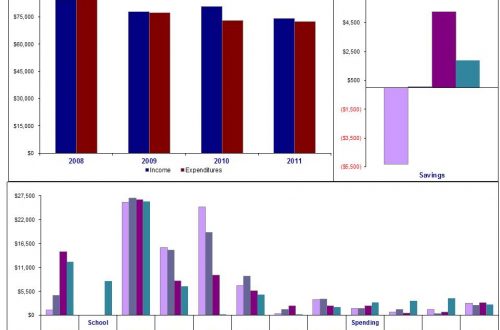
Our Prosper Experiment – 9 years in
You know that old saying about being able to make the statistics say whatever you want them to say? I have been thinking about that today as I have been working with the returns on our “investment” in Prosper, made back in March 2007. Since I have not posted about it on this blog before, I will give a very brief overview. For more details, you can click on the links to my 4 previous Prosper updates.
In 2007, we had “extra” money lying around and decided to invest in peer to peer lending. We chose Prosper. We transferred over $3,000 and happily began making loans. Then over the course of about a year and a half (November 2008 to July 2010), we pulled $2,545.60 back out of the Prosper “investment” account. That left $454.40 of our original investment still in Prosper.
Now, you may recall that 2008-2010 were lean years for lots of people, not just us. As such, our investment lost money. By the time August 2011 rolled around, and I started paying attention to the account again, our balance was $135. That means we had suffered a loss of about $320. (This is where the fun with numbers comes in.)
If you assume that $320 loss was out of the $3,000 we had originally invested, we were only down about 10.7%. But if you assume it was out of the $455 we had left in the account (after making our withdrawals), then we were down by over 70%! In the past, I have always used the $3,000 as the base for our overall rate of return because when we had already started losing money when we made the withdrawals. When I made the last withdrawal in July 2010, there account balance was not $455.
But since then, the economy has improved for a lot of people, and Prosper had to go through the long process of becoming federally accredited, making it a little less risky of an investment. (There is still risk. No investment is guaranteed.) The balance of the account as of January 2016 is $247.79.
We are still down, then, about $210 from our original investment, but our returns since 2011 are at 83.5%, if we use that $135 from 2011 as our base. Of course, if we stick to the $3,000 as our base, our returns are along the lines of 3.8%.
Here are what the conservative numbers (ie using $3,000 as the denominator in all cases) look like:
| Year | Account Total | Overall Rate of Return | Year Over Year Rate of Return | |||
| 1 | 2 | 3 | 4 | |||
| 2011 | $135.00 | (10.6%) | ||||
| 2012 | $172.50 | (9.4%) | 1.3% | |||
| 2013 | $226.00 | (7.6%) | 1.8% | 3.0% | ||
| 2014 | $206.17 | (8.3%) | (0.7%) | 1.1% | 2.4% | |
| 2015 | $247.79 | (6.9%) | 1.4% | 0.7% | 2.5% | 3.8% |
Steady growth is nice, but this sure is not exciting. However, we can take those same number and make them VERY exciting.
In the following graph, we use the $454.40 for the denominator in overall rate of return, and then we use the account balances from the previous years in the year over year rates of return:
| Year | Account Total | Overall Rate of Return | Year Over Year Rate of Return | |||
| 1 | 2 | 3 | 4 | |||
| 2011 | $135.00 | (70.3%) | ||||
| 2012 | $172.50 | (62.0%) | 27.8% | |||
| 2013 | $226.00 | (50.3%) | 31.0% | 67.4% | ||
| 2014 | $206.17 | (54.6%) | (8.8%) | 19.5% | 52.7% | |
| 2015 | $247.79 | (45.5%) | 20.2% | 9.6% | 43.6% | 83.5% |
Painting the overall rosiest picture of this investment, I would combine numbers from both graphs and tell you that while investing in Prosper over the last 9 years, we are down a total of about 7%. However, since 2011, our investment has grown 83.5%. Just think about what could have happened if we had reinvested back in 2007. This is truly an argument for why you “buy” when the market goes down, even if you have already lost money.
Sometimes, percentages and statistics lie. In hard numbers, we are still down just under $210 from what we originally invested. However, 4.5 years ago, in 2011, we were down $320. That means our investment has grown by $110 in that 4.5 years, which is not a whole lot in the grand scheme of things, but it still has almost doubled.
Somehow I doubt my numbers are all that indicative of Prosper investors as a whole. Given how little money we still have invested, our portfolio is very small. In the time period between my 2013 and 2014 reports, we had 2 loans default (called Charge Offs), and you will notice we went backward that year.
| Year | Charge Offs | Paid in Full | Active Loans |
| 2011 | 26 | 28 | 3 |
| 2012 | 26 | 28 | 5 |
| 2013 | 26 | 29 | 6 |
| 2014 | 28 | 30 | 5 |
| 2015 | 28 | 33 | 4 (6) |
This year, we are back up because all of our active loans are current in their payments, and we had three paid off in the 14 months since I last documented the account. However, going down to only 4 active loans does mean we were dangerously narrow in our investing. However, we also had around $100 sitting in the account that could be reinvested. Since you can invest as little as $25 in a loan, I decided to find 4 new loans and double the size of our portfolio. As of right now, two of those loans have funded. The other two are still pending. They have been fully funded, but are still pending review by Prosper (meaning waiting for the borrower to submit all their paperwork).
| Amount Lent | Total Loan Amount | Interest Rate | Amount Paid | Prosper Credit Rating | Term Ends |
| $40.00 | $15,000.00 | 17.45% | $47.06 | B | Feb-17 (5 yr) |
| $75.00 | $25,000.00 | 15.20% | $48.04 | B | Sep-18 (5 yr) |
| $70.00 | $25,000.00 | 20.85% | $28.10 | D | Sep-19 (5 yr) |
| $25.00 | $15,000.00 | 19.13% | $3.22 | D | Jul-20 (5 yr) |
| $25.00 | $7,500.00 | 30.25% | $0.00 | HR | Jan-19 (3 yr) |
| $25.00 | $7,500.00 | 30.25% | $0.00 | HR | Jan-19 (3 yr) |
In the past, I talked about various investment strategies based on our returns, such as investing in only HR rated loans. These are loans where either Prosper does not have enough information or the person has really bad credit, so while they are the highest risk, they are also the highest reward. And our past investing has shown HR rated loans are more likely to be paid off than C or D rated loans.
However, I think for now, the best strategy is actually to diversify – make lots of the little loans ($25 each) instead of single big loans. That way, if someone does default, less is lost both as a total and as a percentage of our investment.
The other thing I need to be aware of is the terms of the loans. Prosper offers 3 or 5 year terms. The four loans I had in the portfolio when I looked at it this month were all 5 year terms, on fairly large amounts borrowed. All four new loans I funded are 3 year terms, most of them for smaller totals (one of the pending loans is for $18,000, but the rest are all at $7,500).
Really, my main goal needs to be to check the Prosper account on a quarterly basis, instead of a yearly (or every 18 months) basis. That will allow for greater diversity not just in the number of loans made, but when they come due.
Overall, I have been pleased with our Prosper experience. While I occasionally consider transferring more money into the account, it is not likely I will. So for now, our rewards are small, but so is the risk.


